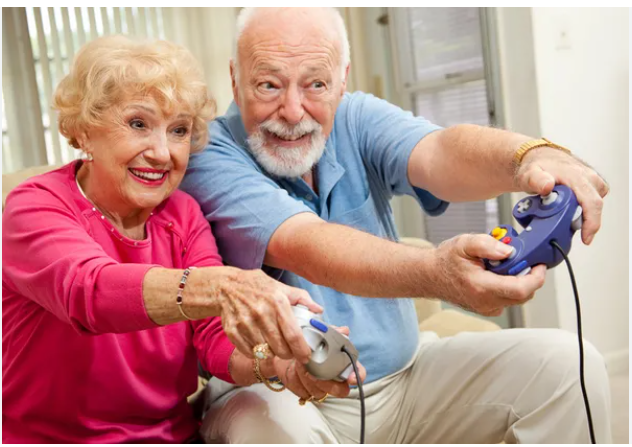Reducing Risk in Aged Care
I read an interesting article a short while ago by Nick Burnett MD Team Teach Australia & New Zealand about minimising restrictive practices and reducing risk for all in aged care, but of course this can be implemented more widely.
He points out some key discussion points around behaviours of concern and behaviours that challenge. He raised some key concepts for staff and organisations to reflect on in relation to their settings.
He then went on to share some key thinking and approaches for consideration in implementation that can be helpful and practical.
Keeping Positive
In some care settings the ratio of directive or negative comments to positive ones can be unbalanced, sometimes with four directive comments to every positive one. It takes a deliberate effort and lots of practice to reverse this damaging ratio, but the effects can be marked. Giving accurate feedback is important but there is no evidence that upsetting people has any beneficial effects. Honest feedback can be structured to keep the mood positive. The ‘PIN’ acronym stands for Positive, Interesting and Negative. It suggests the order in which feedback should be delivered. When providing feedback the carer should begin by talking about several things they like, moving on to interesting features, before finally referring to any negative aspect and suggesting how it can be improved.
He says, Team Teach always praises before prompting. Keep Smiling.
Smiling may be a good habitual behaviour to develop. Smiling triggers an automatic response in other people, causing them to smile in return. It also makes other people feel subconsciously better disposed towards the person who is smiling. It communicates confidence and openness and also stimulates the production of natural opiates and boosts the immune system.
Fear of Failure
Some people are disabled by the fear of failure, which prevents them from taking risks when they are presented with opportunities to learn new skills or form new relationships. People who have been hurt in the past when they tried something new, learn not to risk failure. Instead of feeling excited at the prospect of a new opportunity or a new relationship they experience anxiety at the threat of being hurt or humiliated once more.
Inducing Moods
People can be guided towards more positive emotional states. Guided imagery involves asking a person to remember or imagine that they are in their favourite place, or recall the best day of their lives. By mentally adding sounds, colours and smells the image can be made stronger and the feelings evoked more powerful. This exercise can bring about positive mood change, but only if the person can be persuaded to try out the exercise. Like all other forms of exercise, mental gymnastics takes effort and practice. It is not enough just to join the gym, you have to go and do some work. By practising and working on the positive image, people can create a tool to help them change the way they feel when they are under pressure.
Mood Resources
It makes sense to build up a collection of books, music and videos that put people into a good mood. If polishing up happy memories improves the way people feel then it might be a good idea to encourage people to keep photographs, audio and video recordings of positive experiences. Physical exercise is a proven method of changing the way people feel. It stimulates the production of endorphins. Just raising the arms in the air can increase the blood flow to the brain. Sometimes a change of scenery helps too. It makes sense to encourage physical exercise and invest in the equipment which encourages people to do it. People have to be encouraged to do something, rather than just sitting and wondering why they are not feeling better.
Give Attention and Build a Bridge
Carers need to suppress a natural tendency to respond to provocative behaviour. This takes effort and feels unnatural to begin with. The idea that any attention can be rewarding, including a telling off, takes some getting used to. Carers need to try to catch the moment when an individual begins to exhibit positive behaviour and give immediate positive attention. The hardest part of the process is catching what can be fleeting glimpses of positive behaviour.
Communication
Human beings cannot stop themselves from sending and receiving information and making judgments. As social animals we are programmed to continually signal and decode a wealth of information about ourselves. Whether or not we are aware that we are doing it, the fact remains that nobody has the option of opting out of this process. It happens subliminally and automatically. People can only choose whether to be careful or careless about the messages they are sending and receiving.
Tone and Quality of Voice
People who think their pets understand what they are saying may be deluding themselves, but animals do seem to be sensitive to the tone of voice. It is the sound a person makes when they speak to a dog that determines whether it wags its tail or cringes. When people are anxious, or angry, they tend to talk faster, higher and more loudly. In a crisis professionals need to deliberately speak slower, lower and more quietly.
Enabling Communication
Some people are faced with obstacles which prevent easy communication. Many settings work proactively to enable people to express themselves using a variety of signalling materials and other means. People with poor communication skills can easily become isolated. Sometimes, just sharing an activity with them might be enough, without feeling the need to direct and teach communication. But it is important to remember that a person with limited communication may have learned that the only way to influence the world is through challenging behaviour. Behaviour is a language too.
Summary
Some very practical and useful reflections and ideas for consideration in this article enables you to further minimise the use of restrictive practices and reducing risk for all in your setting.
Team Teach is very keen to further share their experience in other ‘caring’ sectors with those in the Aged Care sector and also to learn from those with deep sector knowledge to refine their training and support to enable better services to be provided. He welcomes contact.
Nick Burnett MD Team Teach Australia & New Zealand nick.burnett@teamteach.com.au
CONTACT US
Email: support@safeswallowing.com.au
Address: 10-14 Fairlight St, Five Dock 2046
0416 273 059
All Rights Reserved | Safe Swallowing





